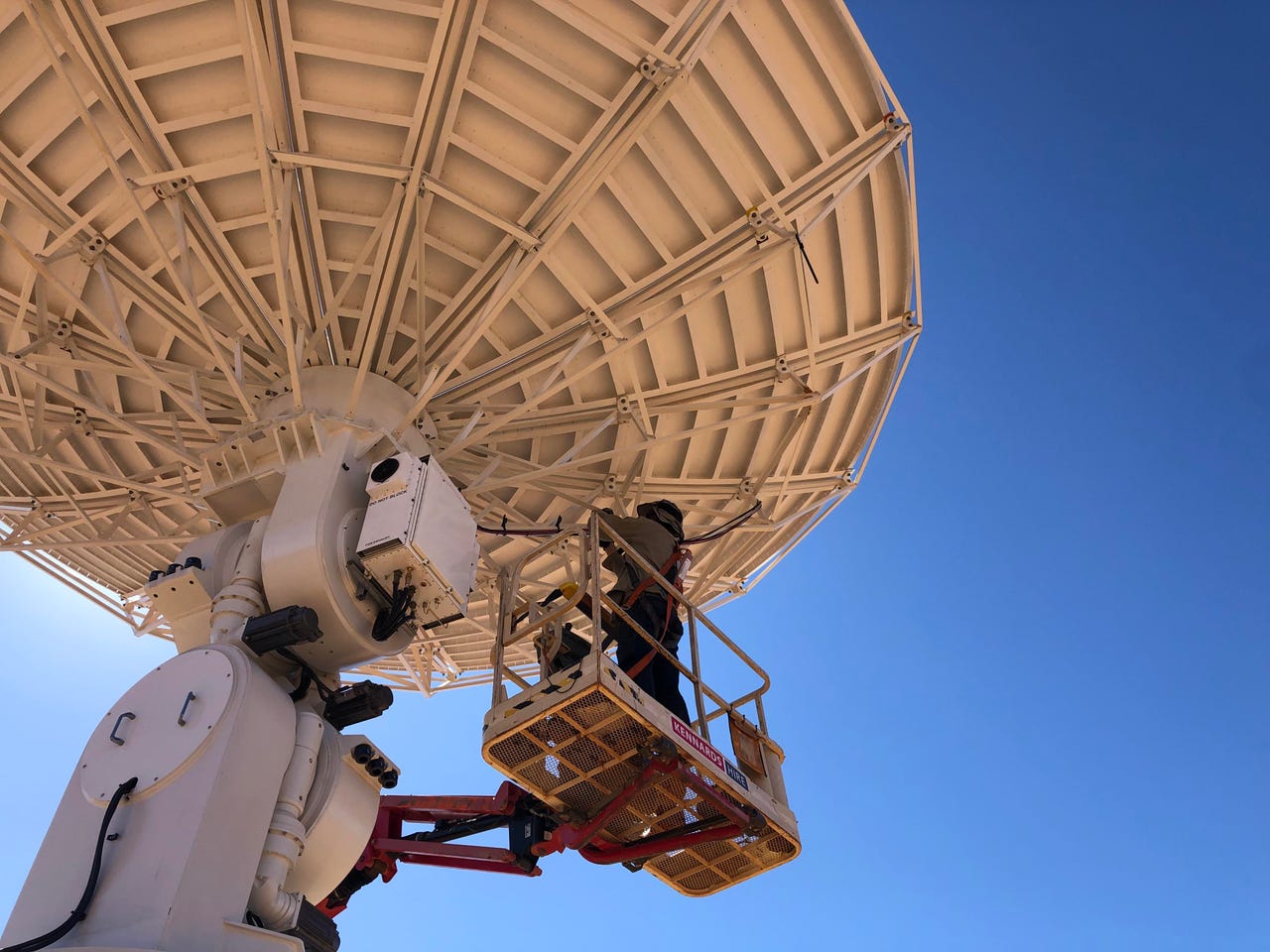Two commercial satellite ground stations go live in Alice Springs


Indigenous Business Australia (IBA) has announced the construction of a pair of commercial satellite ground stations in Alice Springs.
Touted as the first development of its kind on Aboriginal owned land in Australia, IBA said the new infrastructure has the potential to reduce the latency for high resolution earth observation imagery down from hours or days, down to minutes.
It said the satellite ground stations will enhance Australia's capability in disaster management, such as dealing with cyclones and bushfires, as well as aid environmental monitoring, border protection, and search and rescue operations.
IBA, which provided the funding for the construction, said it would also possess strategic uses such as monitoring the economic impacts of pandemics like COVID-19 from space.
The project was built, managed, and owned by Indigenous companies: The Centre for Appropriate Technology (CfAT) and its subsidiaries Ekistica Ltd and CfAT Satellite Enterprises, as well as Ingerreke Commercial who laid the concrete foundations in December.
IBA said the facility forms part of a global network of ground stations operated by Viasat Inc called Real Time Earth.
See also: Dion Devow's mission to help bridge the gap between Indigenous Australians and IT
"This facility brings together our mission of engagement and people, innovation, and excellence -- and puts Aboriginal people at the forefront of Australia's growing space sector," CfAT CEO Peter Renehan said.
"While many have been locked down from COVID-19, our build has been full speed ahead with an Aboriginal-owned project management team and support crew that assembled the antennas."
Renehan said there is currently limited supply of suitable earth observation ground stations in Australia and said Alice Springs was a strategic location to take advantage of the fast-growing market.
"The site is so perfectly located that we will be able to downlink imagery across the whole of Australia's land and waters," he added.
"We are very excited about the future of this technology which we know has the potential to benefit many of our communities, like our Indigenous rangers who look after land and sea country and can use high-resolution imagery from space to do their jobs."
CfAT has also been awarded the facilities maintenance contract by Viasat, which will generate ongoing Indigenous employment and training opportunities for the community, Renehan said.
IBA chairperson Eddie Fry Strongly said the multimillion-dollar investment puts CfAT on the map as a commercial technology innovation hub, which he said is aligned with the priorities for the Australian Space Agency.
"This is just the beginning and we can see a bright future for CfAT who are well-positioned to become one of Australia's leading participants in the satellite and space industry," he added.
RELATED COVERAGE
iNTTN democratising access to telecommunications across Australia
CEO Jade Miller has a goal of reaching all Indigenous Australians, providing them with access to telecommunications.
As climate change bites, NBN is looking to preinstall satellite links at evacuation centres
NBN CEO Stephen Rue has said the climate is going to get worse and it is a serious focus for the company.
Defence signs space satellite deal with Gilmour Space Technologies
To build a rocket to launch small payloads and satellites into orbit by 2022.